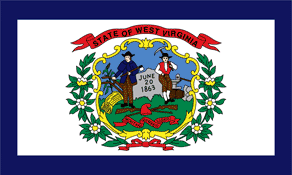West Virginia State Standards for Language Arts: Grade 11

Currently Perma-Bound only has suggested titles for grades K-8 in the Science and Social Studies areas. We are working on expanding this.
WV.RLA.S.11.1. Reading: Students will apply reading skills and strategies to inform, to perform a task and to read for literacy experience by identifying and using grade appropriate essential reading components (phonemic awareness, phonics, vocabulary, fluency, comprehension, and written application) and selecting a wide variety of literature and diverse media to develop independence as readers.
RLA.O.11.1.1. Research, analyze, and evaluate the historical, cultural, political and biographical influences on literary works.
RLA.O.11.1.2. Analyze and evaluate literary styles according to genre:
RLA.O.11.1.2.a. Author's use
RLA.O.11.1.2.b. Elements
RLA.O.11.1.2.c. Expectations
RLA.O.11.1.3. Increase the amount of independent reading with emphasis on classic American, British and World Literature, and informational texts.
RLA.O.11.1.4. Apply appropriate reading strategies necessary for a successful literary experience, to gain information and perform an assigned task:
RLA.O.11.1.4.a. Rereading
RLA.O.11.1.4.b. Paraphrasing
RLA.O.11.1.4.c. Questioning
RLA.O.11.1.4.d. Analyzing
RLA.O.11.1.4.e. Chunking
RLA.O.11.1.4.f. Activating prior knowledge
RLA.O.11.1.5. Analyze characteristics of author's intended audience, purpose, style, voice and technique through the use of reasoning, evidence and literary/character analysis.
RLA.O.11.1.6. Formulate supportable conclusions, summarize events and ideas, construct inferences and generalizations, and critique character traits in a written/oral literary interpretation.
RLA.O.11.1.7. Demonstrate knowledge of and analyze the use of rhetorical and literary devices:
RLA.O.11.1.7.a. Parallelism
RLA.O.11.1.7.b. Archetypes
RLA.O.11.1.7.c. Allegory
RLA.O.11.1.7.d. Parallel structure
RLA.O.11.1.7.e. Antithesis
RLA.O.11.1.7.f. Narrative pace
RLA.O.11.1.7.g. Satire
RLA.O.11.1.7.h. Cadence
RLA.O.11.1.7.i. Scansion
RLA.O.11.1.7.j. Flashback
RLA.O.11.1.7.k. Foreshadowing
RLA.O.11.1.7.l. Freytag's pyramid (exposition, rising action, climax, falling action, catastrophe, denouement)
RLA.O.11.1.8. Analyze and evaluate a variety of texts according to content, structure, purpose, organization of text, and tone.
RLA.O.11.1.9. Evaluate and justify the effectiveness of organizational patterns (e.g., problem-solution, cause-and-effect), textual features, graphical representations (e.g., tables, timelines, captions, maps, photographs) and ideas in informational and literary texts for intent and purpose.
RLA.O.11.1.10. Use knowledge of the history, cultural diversity, politics, and effects of language to comprehend and elaborate on the meaning of texts, to expand vocabulary, and to draw connections to self and to the real world.
RLA.O.11.1.11. Research literary criticism related to the genre being studied.
RLA.O.11.1.12. Evaluate persuasive language and techniques in literature and informational texts for intent, purpose, and effectiveness.
WV.RLA.S.11.2. Writing: Students will apply writing skills and strategies to communicate effectively for different purposes by using the writing process, applying grammatical and mechanical properties in writing and selecting and evaluating information for research purposes.
RLA.O.11.2.1. Employ the five-step writing process (pre-writing, drafting, revising, editing, publishing) for developing narrative, informative, descriptive, persuasive and functional writings that include a letter of job application, a scholarship application/essay, and personal letters.
RLA.O.11.2.2. Generate a clearly worded and effectively placed thesis statement to develop a document (e.g., composition, essay, literary critique, research paper) that has a clear, logical progression of ideas in the introduction, body, and conclusion.
RLA.O.11.2.3. Recognize the concepts of intellectual property and plagiarism in all media:
RLA.O.11.2.3.a. Media copyright laws
RLA.O.11.2.3.b. Private/public domain
RLA.O.11.2.4. Formulate a working research question, organize and consider the relevance of information gathered through the research process, create a detailed outline and produce a research paper with documented and cited sources, using an accepted format (e.g. MLA, APA, Chicago, ASA) with an accompanying multimedia presentation and/or Web page.
RLA.O.11.2.5. Plan and incorporate varied note taking skills to organize and synthesize information from print and electronic primary and secondary sources (e.g., Internet, reference books, electronic databases for periodicals and newspapers) into an outline (introduction, thesis/hypothesis, main points, supporting details/examples, conclusion) to develop a composition or research project.
RLA.O.11.2.6. Develop personal style and voice in writing, and create a clear, logical progression of ideas in argumentative writing, research writing, literary analysis, and creative and reflective writing.
RLA.O.11.2.7. Summarize, paraphrase, and use direct quotations correctly and effectively in writing in order to avoid plagiarism.
RLA.O.11.2.8. Evaluate the effectiveness of and apply various forms of transition in a composition:
RLA.O.11.2.8.a. Sentence links
RLA.O.11.2.8.b. Repetition of key words or phrases
RLA.O.11.2.8.c. Restating of main/key ideas
RLA.O.11.2.9. Revise, edit and strategically employ a variety of sentences for improved variety and more precise and concise language
RLA.O.11.2.9.a. Gerunds
RLA.O.11.2.9.b. Infinitives
RLA.O.11.2.9.c. Subordinate clauses
RLA.O.11.2.9.d. Adjectival phrases,
RLA.O.11.2.9.e. Word usage/choice variations
RLA.O.11.2.9.f. Passive/active voice
RLA.O.11.2.10. Use proofreading and editing strategies to correct errors in and improve organization, content, usage and mechanics. In the editing process integrate print and electronic tools:
RLA.O.11.2.10.a. Spell check
RLA.O.11.2.10.b. Grammar check
RLA.O.11.2.10.c. Thesaurus
RLA.O.11.2.10.d. Dictionary
RLA.O.11.2.10.e. Style sheet or guide
RLA.O.11.2.10.f. Readability score
WV.RLA.S.11.3. Listening, Speaking and Media Literacy: Students will apply listening, speaking and media literacy skills and strategies to communicate with a variety of audiences and for different purposes.
RLA.O.11.3.1. Communicate using the transactional process to include the components of speaker, listener, message, channel, feedback, and noise.
RLA.O.11.3.2. Plan, research, organize and deliver a grammatically correct presentation using a variety of media (e.g., live performance, video, PowerPoint, web pages).
RLA.O.11.3.3. Use verbal and nonverbal strategies to listen and respond for diverse purposes:
RLA.O.11.3.3.a. Comprehension
RLA.O.11.3.3.b. Evaluation
RLA.O.11.3.3.c. Expression of empathy
RLA.O.11.3.3.d. Persuasion
RLA.O.11.3.3.e. Mediation
RLA.O.11.3.3.f. Collaboration
RLA.O.11.3.4. Analyze and create examples of the wide range of purposes embedded in media communications.
RLA.O.11.3.5. Plan, compose, produce and evaluate an age appropriate product from various forms of media communication that demonstrates an understanding of format, purpose, audience, and choice of medium.
RLA.O.11.3.6. Properly use private and public information.